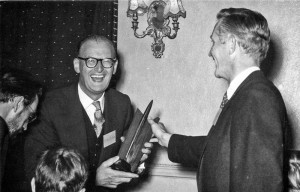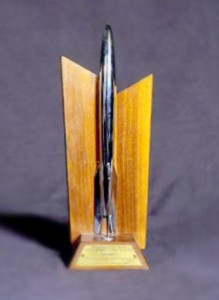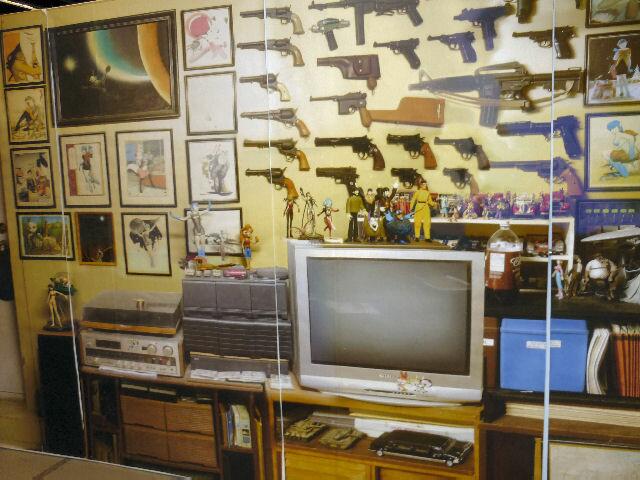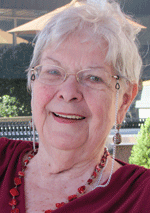The legendary Dave Kyle is 95 today. History has been kind to him for the same reason as Churchill – because he has written it (mostly for Mimosa.)
One cannot fail to be impressed by the realization that a fanpolitician who has been in as much mischief as Dave nevertheless was made a Knight of The Order of Saint Fantony, won the Big Heart Award, and became Worldcon fan guest of honor (1983).
What mischief is that? Here are a few examples —
He attended the 1936 meeting of New York and Philly fans which decided to dub itself the first science fiction convention in advance of the Leeds event announced for 1937.
He wrote the “Yellow Pamphlet” that helped inspire the “The Great Exclusion Act of 1939” but, unlike his fellow Futurians, was not kicked out of the First Worldcon. As Joe Siclari explains —
Some bitter feuding between the Moskowitz-led convention leadership and the New York Futurian group led by Donald A. Wollheim, who had originally been tasked with running the convention. This erupted in an argument at the convention which led to the first great “Exclusion Act.” Wollheim, Fred Pohl, John Michel, Robert W. Lowndes, Cyril Kornbluth, and Jack Gillespie were ejected from the convention for distributing a brochure titled: A Warning. The booklet had been published by Kyle. He told me he stashed the copies behind a radiator where Michel found them. Michel and the other Futurians were giving it out when Moskowitz and Sykora found out about it and banned them from the convention. Meanwhile, Kyle was inside, blissfully attending the proceedings.
In 1956 when Kyle got to chair a Worldcon he enhanced his legend by awarding Hugos made with Oldsmobile hood ornaments, and having banquet speech freeloaders run off with the ever-after famous message “Dave Kyle says you can’t sit here.”
At about the same time he also got involved as a director of WSFS Inc. In the falling-out among its founders Kyle sued some of the others for damage to his reputation.
Yet time does heal all wounds. Three decades later Dave’s reputation was greater than it had ever been – to the degree that in 1985 Starlog Magazine listed him among the 100 Most Important People in Science Fiction/Fantasy alongside Heinlein, Tolkien, Shatner and Nimoy.
Well, there’s greatness and then there’s greatness…






